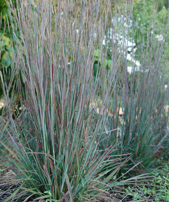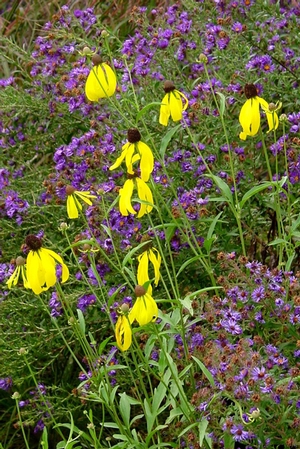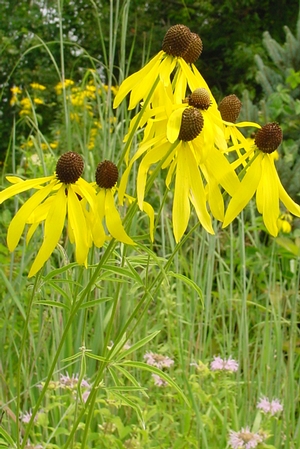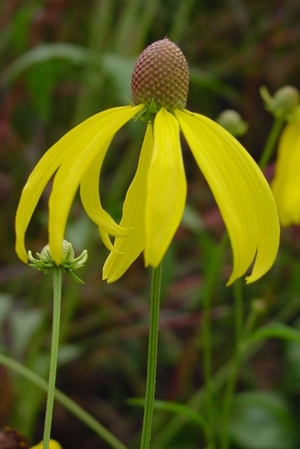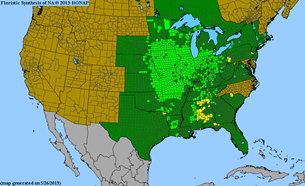
Ratibida pinnata
prairie coneflower
Brown cones with reflexed yellow ray petals adorn this midwestern prairie native in midsummer. Emits a soft fragrance of anise when seeds are crushed. Long-lived and very easy to grow in most situations. Great for attracting birds and butterflies! Combines well with meadow grasses and flowers. Makes a wonderful cut flower, too!
| SIZE | |
|---|---|
| Ratibida pinnata LP50 - 50 per flat | Availability |
Height3-5 Feet |
Spread2-3 Feet |
Spacing12 Inches |
Bloom ColorYellow |
USDA Hardiness Zone 3-8 |
prairie coneflower Interesting Notes
Easily grown and attractive to humans and animals alike, Ratibida pinnata has brown cones with reflexed yellow ray petals growing 3-5’ tall. Blooming through summer, prairie coneflower emits a soft fragrance of anise when seeds are crushed. It is long-lived, grows in most situations, and performs best with competition, combining well with meadow grasses and flowers.
Ratibida pinnata is found Vermont to Florida to Kansas and Oklahoma in open prairie. Commonly seen along roadsides, meadows, and woodland edges, prairie coneflower performs best in lean soils in full sun. It is very adaptable, however, and can tolerate part-sun and moist to slightly dry soils from sand to clay. R. pinnata spreads happily by seed, if all the birds don’t eat them first, and the upright manner of the plant allows it to combine easily in plantings. If a monoculture is desired – plants must be planted very densely. Foliar diseases do not seem to affect this plant however; very rich soil causes the plant to flop over.
Ratibida pinnata is planted throughout our trial gardens in Landenberg, easily adapting from tall meadow to deep greenroof planting systems. The long season of bloom and pollinator and bird benefit make this plant a joy to all. A favorite for a wide variety of bees, moths, wasps, butterflies, and beetles – the foliage is even particular forage for the Silvery Checkerspot caterpillar. Prairie coneflower is a plant best used in mass as the narrow foliage makes it very slight – perfect for the sunny border, prairie, meadow, or native plant garden. Young leaves are tender and delicious for herbaceous animals such as cattle and groundhogs.
Ratibida pinnata Growing and Maintenance Tips
Thrives in average to dry, well-drained, clay or sandy soil. Somewhat drought tolerant. Propagate by seed. Excellent for naturalized, meadow and butterfly gardens as well as in mass plantings.
Key Characteristics & Attributes








Additional Information
|
Soil Moisture Needs
|
Green Infrastructure
|
Plug Type
|
Attributes
|
||||||||||||
|
Season of Interest (Flowering)
|
Propagation Type
|
